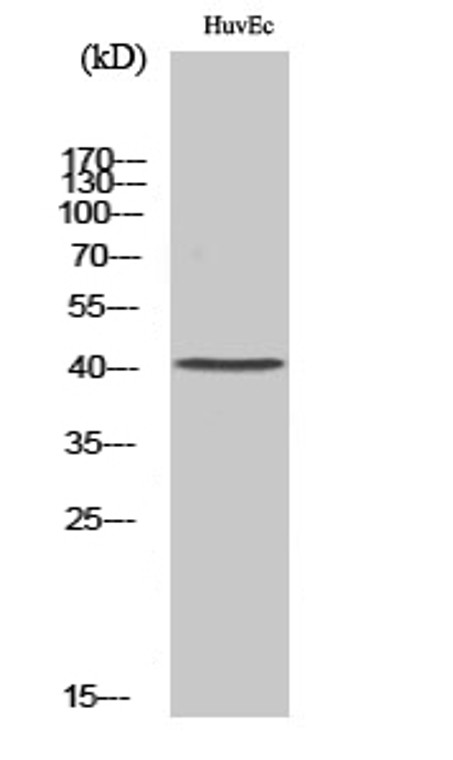| Host: |
Rabbit |
| Applications: |
WB/IHC/IF/ELISA |
| Reactivity: |
Human/Rat/Mouse |
| Note: |
STRICTLY FOR FURTHER SCIENTIFIC RESEARCH USE ONLY (RUO). MUST NOT TO BE USED IN DIAGNOSTIC OR THERAPEUTIC APPLICATIONS. |
| Short Description: |
Rabbit polyclonal antibody anti-Neurotrimin (235-284) is suitable for use in Western Blot, Immunohistochemistry, Immunofluorescence and ELISA research applications. |
| Clonality: |
Polyclonal |
| Conjugation: |
Unconjugated |
| Isotype: |
IgG |
| Formulation: |
Liquid in PBS containing 50% Glycerol, 0.5% BSA and 0.02% Sodium Azide. |
| Purification: |
The antibody was affinity-purified from rabbit antiserum by affinity-chromatography using epitope-specific immunogen. |
| Concentration: |
1 mg/mL |
| Dilution Range: |
WB 1:500-1:2000IHC 1:100-1:300ELISA 1:20000IF 1:50-200 |
| Storage Instruction: |
Store at-20°C for up to 1 year from the date of receipt, and avoid repeat freeze-thaw cycles. |
| Gene Symbol: |
NTM |
| Gene ID: |
50863 |
| Uniprot ID: |
NTRI_HUMAN |
| Immunogen Region: |
235-284 |
| Specificity: |
Neurotrimin Polyclonal Antibody detects endogenous levels of Neurotrimin protein. |
| Immunogen: |
The antiserum was produced against synthesized peptide derived from human NT. AA range:235-284 |
| Function | Neural cell adhesion molecule. |
| Protein Name | NeurotriminHntIglon Family Member 2 |
| Database Links | Reactome: R-HSA-163125 |
| Cellular Localisation | Cell MembraneLipid-AnchorGpi-Anchor |
| Alternative Antibody Names | Anti-Neurotrimin antibodyAnti-Hnt antibodyAnti-Iglon Family Member 2 antibodyAnti-NTM antibodyAnti-IGLON2 antibodyAnti-NT antibodyAnti-UNQ297 antibodyAnti-PRO337 antibody |
Information sourced from Uniprot.org
12 months for antibodies. 6 months for ELISA Kits. Please see website T&Cs for further guidance









